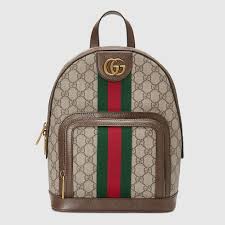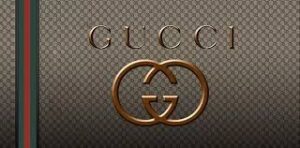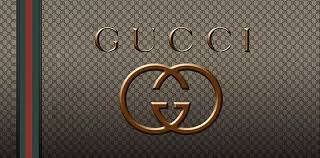Gucci: A Comprehensive Exploration of the Luxury Fashion Brand
Introduction
Gucci is a name synonymous with luxury, craftsmanship, and Italian heritage. Founded in 1921 in Florence, Italy, by Guccio Gucci, the brand has grown from a small leather goods company to one of the most influential fashion houses in the world. This exploration delves into Gucci’s history, its evolution over the decades, the brand’s impact on the fashion industry, and its current positioning within the luxury market.
The Founding of Gucci
Origins and Early Years
Guccio Gucci started his career in the hospitality industry, working at the Savoy Hotel in London. Inspired by the elegance and sophistication of British high society, he returned to Florence and opened a small leather goods shop, initially selling luggage, handbags, and equestrian gear. The quality of Gucci’s craftsmanship quickly gained recognition, and the brand began to attract a wealthy clientele.
In 1938, Gucci introduced its signature green-red-green stripe, which has since become one of the brand’s most iconic elements. The logo, featuring interlocking Gs, was created later, becoming synonymous with luxury and status.
The First Gucci Boutique
By the late 1940s, Gucci had established its first boutique in New York City, marking its expansion beyond Italy. This international presence laid the groundwork for the brand’s future success and solidified its reputation as a global luxury brand. The introduction of the bamboo handle bag in the 1940s, made from sustainable materials due to wartime shortages, further showcased the brand’s innovation.
The Evolution of Gucci
Mid-20th Century: Expansion and Innovation
In the 1950s and 1960s, Gucci expanded its product range to include ready-to-wear clothing and accessories. The brand gained popularity among Hollywood stars and influential figures, such as Audrey Hepburn and Grace Kelly, who were often seen wearing Gucci pieces. This celebrity endorsement played a crucial role in establishing Gucci as a symbol of luxury and exclusivity.
The 1960s also saw the introduction of the famous Gucci loafer, a style that would become an enduring classic. The combination of craftsmanship, quality materials, and distinctive design helped solidify Gucci’s status in the luxury market.
The Challenge of the 1980s
The 1980s were a tumultuous period for Gucci. The brand faced internal struggles, including management disputes and a decline in its reputation due to overexposure and counterfeit products. Despite this, the brand remained a staple in luxury fashion.
In the late 1980s, the Gucci family sold a significant stake of the company to an investor group, leading to a restructuring aimed at revitalizing the brand. This marked the beginning of a new era for Gucci, focused on modernizing its image and reclaiming its position in the fashion world.
The Tom Ford Era
In 1990, Tom Ford was appointed creative director, and his influence transformed Gucci into a modern luxury powerhouse. Ford’s provocative designs and marketing campaigns redefined the brand, blending sensuality with sophistication. He introduced bold silhouettes, vibrant colors, and a more daring aesthetic, which resonated with a younger audience.
Under Ford’s direction, Gucci experienced exponential growth. The brand launched successful lines of ready-to-wear clothing, accessories, and fragrances, solidifying its status as a global leader in luxury fashion. In 1999, Gucci became a publicly traded company, further enhancing its market presence.
The Transition to Alessandra Michele
After Ford’s departure in 2004, the brand underwent a period of transition, culminating in the appointment of Alessandra Michele as creative director in 2015. Michele’s vision marked a departure from the sleek, sexy aesthetic of Ford, embracing a more eclectic and whimsical approach.
Michele reintroduced vintage-inspired designs, bold patterns, and gender-fluid aesthetics, appealing to a new generation of consumers. His runway shows celebrated diversity and creativity, reinvigorating the brand’s image and fostering a sense of inclusivity.
Gucci’s Influence on the Fashion Industry
Setting Trends
Gucci has played a pivotal role in shaping fashion trends over the decades. The brand’s innovative designs often set the tone for luxury fashion, influencing other designers and brands. Michele’s focus on maximalism, layering, and bold prints has contributed to a resurgence of retro styles in contemporary fashion.
Cultural Collaborations
Gucci has embraced cultural collaborations, forging partnerships with artists, musicians, and filmmakers. These collaborations not only expand the brand’s reach but also enhance its cultural relevance. For instance, Gucci’s partnership with American singer Harry Styles has been notable, showcasing a shared ethos of self-expression and breaking gender norms.
Sustainability Efforts
In recent years, Gucci has committed to sustainability and ethical practices. Under the “Gucci Equilibrium” initiative, the brand focuses on reducing its environmental impact through responsible sourcing, sustainable materials, and social initiatives. This commitment aligns with the growing consumer demand for transparency and accountability in the fashion industry.
The Current Position of Gucci in the Luxury Market
Market Presence
Gucci remains one of the most valuable luxury brands in the world. It is a key player in the Kering Group, alongside other luxury brands like Balenciaga and Saint Laurent. Gucci’s strong market presence is bolstered by its innovative marketing strategies, which leverage digital platforms and social media to engage with consumers.
Target Demographics
Gucci has successfully attracted a diverse demographic, appealing to both older luxury consumers and younger millennials and Gen Z shoppers. The brand’s playful aesthetic, combined with its commitment to inclusivity, resonates with younger audiences seeking authenticity and self-expression.
The Role of Digital Marketing
Gucci has embraced digital marketing as a primary channel for reaching consumers. The brand’s innovative campaigns, interactive social media presence, and collaborations with influencers have contributed to its popularity among younger consumers. Gucci’s use of technology in fashion shows, such as virtual reality and live-streaming, has also redefined the traditional fashion show format.
Gucci’s Iconic Products
The GG Logo and Accessories
The interlocking G logo is one of the most recognizable symbols in luxury fashion. Gucci’s accessories, including handbags, shoes, and belts, often feature this iconic emblem. The brand’s handbags, such as the Dionysus and the Marmont, have become status symbols, coveted by fashion enthusiasts worldwide.
Ready-to-Wear Collections
Gucci’s ready-to-wear collections reflect the brand’s commitment to craftsmanship and innovation. The designs range from tailored suits to flowing dresses, often characterized by bold colors, intricate patterns, and unique embellishments. The collections cater to diverse tastes, reinforcing Gucci’s position as a leader in the luxury market.
Fragrances and Beauty Products
Gucci’s foray into fragrances has been highly successful, with iconic scents like Gucci Bloom and Gucci Guilty. The brand has expanded its beauty line, offering cosmetics and skincare products that embody its luxury ethos. These products contribute to the overall brand experience, allowing consumers to engage with Gucci beyond fashion.
Conclusion
Gucci’s journey from a small leather goods shop in Florence to a global luxury powerhouse is a testament to its resilience and adaptability. The brand’s ability to evolve with changing consumer preferences while maintaining its commitment to craftsmanship and quality has solidified its place in the fashion industry.
As Gucci continues to innovate and embrace sustainability, it remains at the forefront of luxury fashion, inspiring individuals to express their identities through style. With a rich history, iconic products, and a dynamic creative vision, Gucci is not just a brand; it is a cultural phenomenon that transcends time and trends. As the fashion landscape evolves, Gucci will undoubtedly continue to play a pivotal role in shaping the future of luxury.
